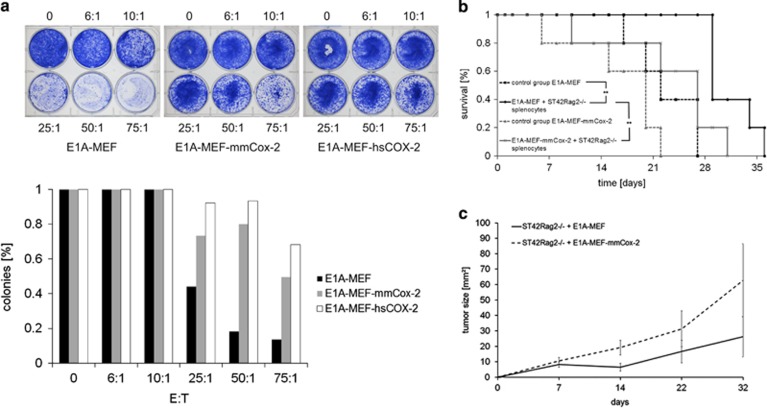Figure 1.
COX-2 confers resistance against tumor suppression by antigen-specific T cells in vitro and in vivo. (a) Clonogenic survival of E1A-MEF, and E1A-MEF expressing the murine (mmCox-2) or human (hsCOX-2) following incubation with St42Rag2−/− splenocytes directed against the E1A (amino acids 234–243) epitope at the indicated effector-to-target ratios (6 : 1 to 75 : 1). Representative photographs (upper panel) and enumeration of clones (mean values) of three independent experiments each are shown (lower panel). (b) Survival of untreated NOD/SCID mice bearing E1A-MEF fibrosarcomas (closed boxes/dashed line), or E1A-Cox2-MEF fibrosarcomas (closed triangles/dashed line), and E1A-MEF fibrosarcoma-bearing mice (closed circles/solid line) or E1A-Cox2-MEF fibrosarcoma-bearing mice (crosses/solid lines) both treated with a single adoptive transfer of 3.8 × 107 St42Rag2−/− splenocytes. Kaplan–Meier survival plots (five mice per group; *HR=0.34, P=0.0347; **HR=0.23, P=0.0027, log-rank test). (c) Tumor growth of E1A-MEF (solid line) and E1A-Cox2-MEF (dashed line) injected in St42Rag2−/− mice. Mean values (±S.E.M.) of five mice per group are given

